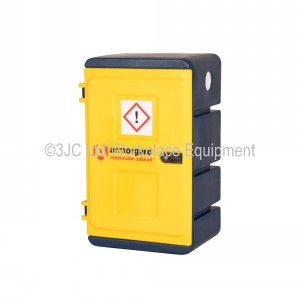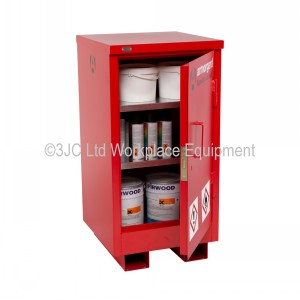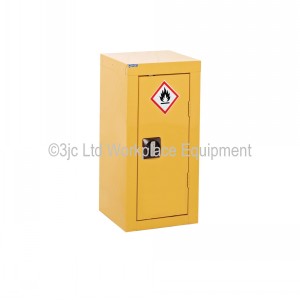The Indispensable Role of Chemical Storage Cabinets
Chemical storage cabinets are an essential component of safety and efficiency in laboratories, manufacturing facilities, and other environments dealing with hazardous substances. The importance of these specialised storage solutions cannot be overstated, as they safeguard both people and the environment while simultaneously enhancing operational productivity.
Understanding Chemical Storage Cabinets
Chemical storage cabinets, often constructed from durable materials like steel or polyethene, are designed to contain hazardous substances securely. These specially manufactured cabinets ensure that the stored chemicals are not only safe from external influences but also that they do not pose a risk to the surrounding environment.
Key Features of Chemical Storage Cabinets
The design of these cabinets is governed by strict regulations to ensure optimal safety. Key features often include:
Fire Resistance: Many chemicals can ignite or explode when exposed to heat. Hence, these cabinets are often fire-resistant, limiting the spread of flames and damage in case of a fire.
Leak Prevention: In the event of a chemical leak, the cabinets are designed to contain the substance, preventing it from escaping into the environment.
Organisation: The cabinets facilitate the orderly storage of chemicals, helping to prevent cross-contamination.
Security: These cabinets often come with secure locking mechanisms to prevent unauthorised access.
Ventilation: If the stored chemicals emit dangerous fumes, the cabinets can be ventilated to ensure these gases do not build up inside.
The Imperative of Safety 
The foremost reason for the adoption of chemical storage cabinets is safety. Without proper storage, chemicals can pose significant risks, such as fires, toxic exposure, and environmental contamination.
Preventing Accidents
Accidents involving chemicals can have severe consequences, including bodily harm and property damage. Storing chemicals in dedicated cabinets minimises the risk of accidental spills or leaks, thus enhancing overall safety.
Guarding Against Fire Hazards
Many chemicals are highly flammable, making fire prevention a critical consideration. Chemical storage cabinets help mitigate this risk by isolating flammable substances and containing any potential fire within a controlled environment.
Limiting Chemical Exposure
Exposure to certain chemicals can lead to adverse health effects.
Chemical storage cabinets help limit this exposure by containing any fumes or spills within the cabinet, protecting individuals in the vicinity.
Compliance with Legal Regulations
Aside from safety, the use of chemical storage cabinets is often a legal requirement. Non-compliance can lead to hefty fines and other legal consequences.
Meeting Standards and Regulations
Several international and national standards dictate the storage of hazardous materials. Compliance with these standards, such as those set by the Control of Substances Hazardous to Health (COMAH), Chemicals (Hazard Information and Packaging for Supply) Regulations. (CHIP) and Control of Substances Hazardous to Health (COSHH) Regulations.
Avoiding Legal Ramifications
Failure to comply with these regulations can have serious legal implications, including hefty fines or even imprisonment. By using appropriate chemical storage cabinets, organisations can ensure they are meeting their legal obligations.
Enhancing Functionality and Efficiency
Beyond safety and compliance, chemical storage cabinets offer practical benefits that can enhance operational efficiency.
Organising Chemicals
With a range of chemicals at their disposal, laboratories and other similar establishments often face the challenge of organising these substances efficiently. Chemical storage cabinets facilitate better organisation by providing designated spaces for each chemical, improving accessibility and reducing the time spent searching for specific substances.
Improving Workspace Management 
Properly organised chemical storage can significantly enhance workspace management. By streamlining the storage process, these cabinets allow for more efficient use of space, leading to an overall more functional and productive work environment.
Ensuring Security and Integrity
Chemical storage cabinets also play a vital role in maintaining the integrity of the stored substances and ensuring the security of the facility.
Maintaining Chemical Purity
The purity of stored chemicals is crucial for accurate and reliable results in experiments or manufacturing processes. Chemical storage cabinets help maintain this purity by protecting substances from contamination.
Preventing Unauthorised Access
Chemical storage cabinets are typically equipped with secure locking mechanisms, which prevent unauthorised individuals from accessing potentially dangerous substances. This is particularly important in environments such as schools or public facilities, where uncontrolled access to hazardous chemicals could have severe consequences.
Consequences of Improper Chemical Storage
The absence of proper chemical storage can lead to a host of undesirable outcomes, ranging from safety hazards to legal issues.
Improperly stored chemicals can lead to various hazardous situations, including fires, chemical exposure, and environmental contamination.
These incidents can result in significant harm to individuals and substantial damage to property.
Operational Inefficiencies
Without proper storage and organisation, the retrieval and handling of chemicals can become a time-consuming process, hampering operational efficiency.
Legal Consequences
In the event of an incident caused by improper chemical storage, organisations could face severe legal repercussions. These could include fines, lawsuits, and even criminal charges.
Choosing the Right Chemical Storage Cabinets
The selection of chemical storage cabinets should consider the specific needs and circumstances of each organisation, including the types of chemicals used, the volume of chemicals stored, and the available space.
Evaluating Chemical Characteristics
The first step in selecting an appropriate cabinet involves understanding the characteristics of the chemicals to be stored. This information, which can often be found on the Safety Data Sheets (SDS) of each chemical, will guide the choice of cabinet and help ensure it meets all necessary safety requirements.
Considering Legal and Safety Standards
The chosen cabinets should meet all relevant safety standards and legal requirements. This often includes compliance with specific fire resistance ratings, ventilation requirements, and locking mechanisms.
Assessing Capacity Needs
The size and capacity of the chosen cabinet should align with the volume of chemicals to be stored. It’s also important to consider future needs, as the amount of stored chemicals may increase over time.
Investing in Chemical Storage Cabinets
Investing in high-quality chemical storage cabinets is a crucial step towards ensuring a safe and efficient working environment. Whether you’re updating your laboratory, considering a new workspace layout, or simply looking to improve your current chemical storage practices, the right cabinets can make a significant difference.
Selecting the Right Provider
When choosing a provider for your chemical storage cabinets, consider factors such as product quality, compliance with safety standards, and the provider’s experience in the field.
There is a wide range of chemical storage cabinets available from 3JC, from metal and stainless steel cabinets to plastic laminate and phenolic cabinets. Explore these options to find the type that best suits your specific needs.
Chemical storage cabinets play a pivotal role in ensuring safety, compliance, efficiency, and security in various environments dealing with hazardous substances. By investing in the right cabinets and following best practices for chemical storage, organisations can safeguard their employees, protect the environment, and enhance operational efficiency.

